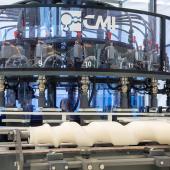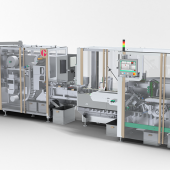What will the process industry look like in 2025?
More flexible, more integrated, more biological, experts say. At Achema 2018 (Francoforte, 11 - 15 giugno) spotlight on the most significant trends of the chemical and pharmaceutical sector.

There are three macrotrend identified by the organizers of ACHEMA 2018 to clarify the latest developments in the sector and encourage visitor orientation among the many proposals of the exhibition offer *.
Transversal to the entire supply chain - from equipment to processes to business models - megatrends draw attention to developments affecting all stakeholders in the chemical e pharmaceutical process industry.
Flexible Production
Digitisation has been a major driver of the process industry for some time, and it’s no end in itself.
It offers, in fact, an important tool to guarantee ever greater flexibility in the chemical production, which has to manage variable and heterogeneous factors: different raw materials, a volatile energy supply, customer demands for more individualized products, an so on…
At Achema, several exhibitors offer relevant products or services:
modular plants that can be assembled from “plug and play” components according to the requirements of different processes, production volume or locations; robust technologies that allow for variations of production volume depending, for example, on energy supply; automated process control that uses real time measurements to optimize processes.
Chemical and pharma logistics
Used to be perceived as something happening outside the factory gate, in times of integrated supply chains chemical and pharma logistic applications have become a significant factor in production. In some areas like personalized medicine, logistics even become part of the product. New therapies rely on samples being transported fast and reliably from the bedside to the lab. With track-and-trace-technologies the location of the sample can be determined at any time: an important feature in quality control not only in the pharmaceutical, but also in the chemical industry.
Biotech for Chemistry
The third focal topic showcases the integration of chemical and biotechnological methods. They are no longer strictly separated; pragmatically, the method of choice is the one promising the best results. Citric acid, for example, has been produced since the 1920s by purely biotechnological means, for acetic acid, the chemical process is still more competitive. This leads to questions regarding the development of robust production strains as well as the selection of solvents at the interface between biotechnological and chemical reaction steps. More than ever biotechnologists, chemists and engineers have to cooperate closely in these processes.

















